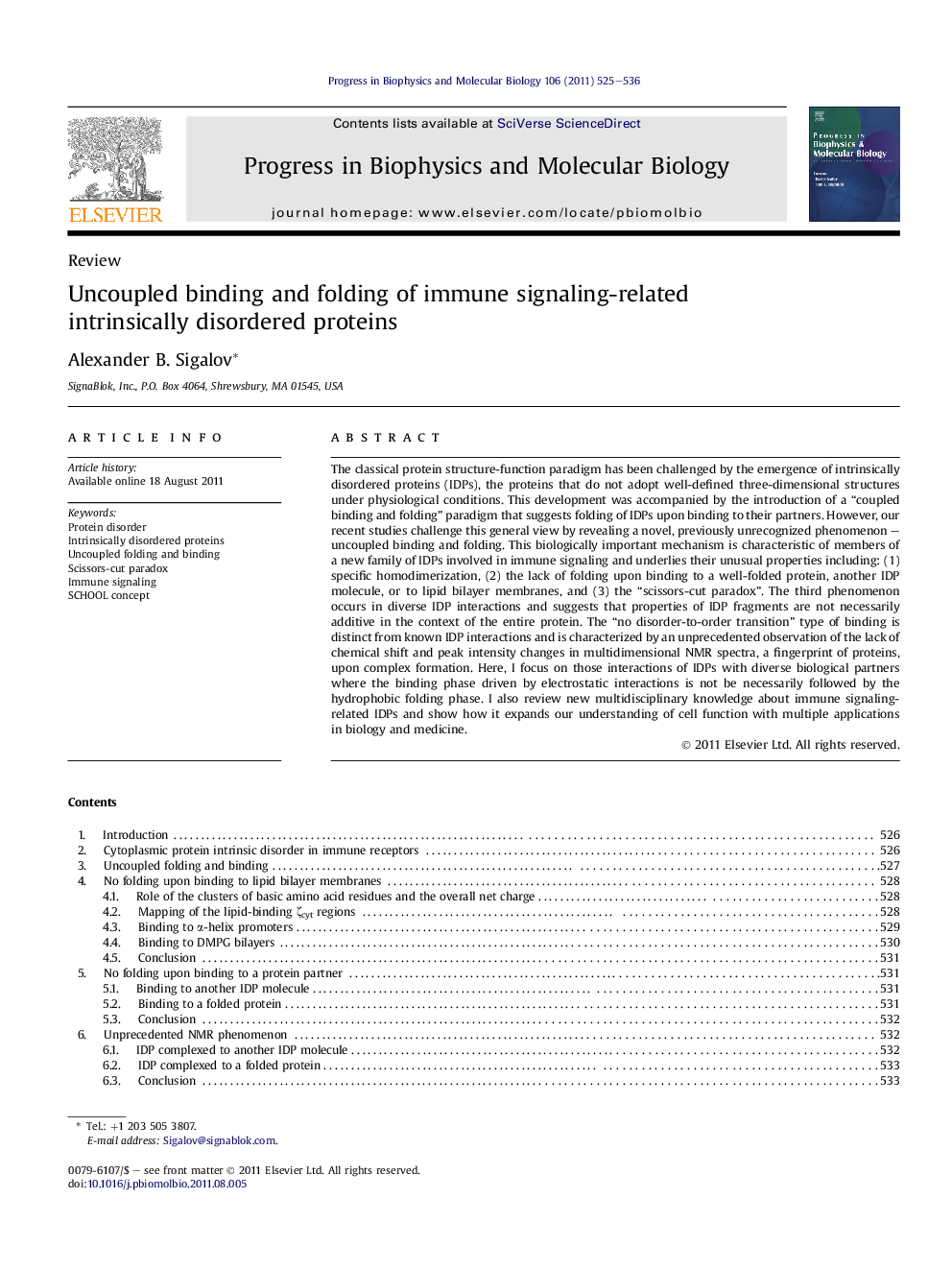| Article ID | Journal | Published Year | Pages | File Type |
|---|---|---|---|---|
| 2070238 | Progress in Biophysics and Molecular Biology | 2011 | 12 Pages |
The classical protein structure-function paradigm has been challenged by the emergence of intrinsically disordered proteins (IDPs), the proteins that do not adopt well-defined three-dimensional structures under physiological conditions. This development was accompanied by the introduction of a “coupled binding and folding” paradigm that suggests folding of IDPs upon binding to their partners. However, our recent studies challenge this general view by revealing a novel, previously unrecognized phenomenon – uncoupled binding and folding. This biologically important mechanism is characteristic of members of a new family of IDPs involved in immune signaling and underlies their unusual properties including: (1) specific homodimerization, (2) the lack of folding upon binding to a well-folded protein, another IDP molecule, or to lipid bilayer membranes, and (3) the “scissors-cut paradox”. The third phenomenon occurs in diverse IDP interactions and suggests that properties of IDP fragments are not necessarily additive in the context of the entire protein. The “no disorder-to-order transition” type of binding is distinct from known IDP interactions and is characterized by an unprecedented observation of the lack of chemical shift and peak intensity changes in multidimensional NMR spectra, a fingerprint of proteins, upon complex formation. Here, I focus on those interactions of IDPs with diverse biological partners where the binding phase driven by electrostatic interactions is not be necessarily followed by the hydrophobic folding phase. I also review new multidisciplinary knowledge about immune signaling-related IDPs and show how it expands our understanding of cell function with multiple applications in biology and medicine.
